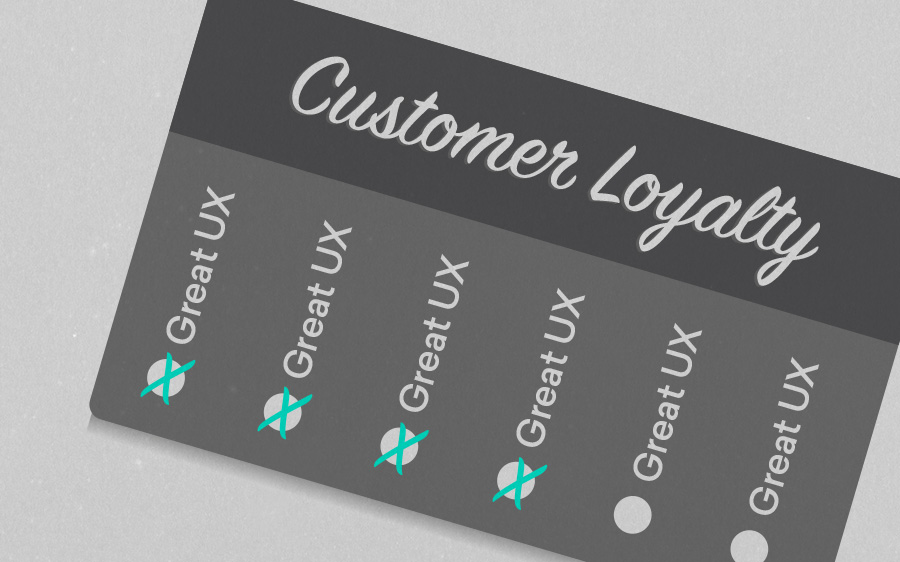
How does user experience enhance customer acquisition and loyalty?
Today, with a swipe of a finger, in the blink of an eye, one of your loyal consumers can be engaging with content from one of your competitors. And your current consumer, none the wiser, will be led, informed and all too soon considering their products ahead of yours. This scenario is commonplace in the race to increased lead generation, customer acquisition and the holy grail of today’s digital marketing efforts – customer loyalty.
For those of you who have engaged with Tempo before, you’ll understand we’re passionate about customer acquisition and that ‘living la vida loyal’ is one of our favourite topics. Fuelled by the rise in subscription-based pricing models that are driving on-demand purchasing behaviours through Apps and reward loyalty programs, the fight for a share of attention, let alone loyalty, is getting wafer thin.
Recently, Air-BnB announced that their customers can now earn Qantas frequent flyer points when booking with them. It’s another example of on-demand purchasing behaviour rewarded by points. And why not – it makes sense for the regular traveller segment to be motivated in this fashion.
What surrounds a consumer before they search and consider your product is no longer just value or price. It’s as much about the device and process used to find you. Then it’s the convenience of the overall experience combined. How easy is it to purchase, pay for and have your product delivered? Can a customer earn points or get the benefit of adding a second discounted item? By the time they have worked out their payment option, delivery solution and discount code, the cart total is secondary. Why? Because with any leading eCommerce site the user experience was excellent, almost seamless in fact. Today, buying online has never been easier. Tomorrow, we may simply tell a bot what we’re searching for and they’ll do the hard work, requiring just a quick fingerprint from us to authorise it all.
It appears that the formula for success in the eCommerce world is user experience + customer logistics benefits. Overall consumer experience is number one. Some Apps outshine others, just like some websites outshine other websites. We all judge the quality of a product or service online by the user experience it offers when engaging.
Critically, we care less and less about the category of a product or service. We want the same experience-driven benefits regardless. This is no different from Tinder – judge and swipe. You shouldn’t bother showcasing, conversing or selling online if you’re not prepared to differentiate on content and user experience. Loyalty is driven by rich and rewarding user experiences. Not once, not twice but for as long as you can hold on.
This leads me to a futurist point of view about the idea of brands and the sustainability of the wholesale model. I believe wholesale today, and more so tomorrow, represents distribution and logistics only. Most people search and consider a product and then find the most convenient way to transact. When we reach a time when we can have the stock at hand to deliver that day or the very next, things change. Right now, support is online or a click-to-call away. Essentially, everything is in the cloud except the product. Who will be better at warehousing and distribution? A retailer or Freight Logistics company? When a number of retailers all stock the same products, the only consumer benefit they can have comes down to one thing: ‘in stock’.
Perhaps, if the trend continues to scale, more brands – particularly those starting out – won’t inherit or consider the wholesaling mentality. They’ll simply market through cloud Commerce, social influence, channels and loyalty platforms. This is perhaps the old definition of wholesale, reborn. Distribution by channel choice. Direct user experience. The engagement and user experience will be unmatched as no one else will be retailing their products. Loyalty will be seamless, with controlled acquisition across all channels.
In contrast to this view, what they wholesale is their customer logistics – payment options, delivery options and solutions from integrated marketplaces. Freight handling can also manage the logistics of broader distribution into other territories and markets.
So, this model of direct user experience is more about fewer brands using retailers to wholesale their products in favour of using more digital channels instead.
But what about bricks and mortar? While offline sales are still a major part of multi-channel retail, brands will simply dial up theses logistics on demand as well. This will be particularly prevalent with branded pop-up stores, short term tenancies, activations and events. In this age of business intelligence and customer data, knowing where to be, at what time and for what period to maximise sales should all be predictable. And with Chief Customer Officers managing and understanding the lifetime value of more loyal customers than ever, investment in long-term bricks and mortar strategies may be baulked at at board level.
Don’t fear though, the mega mall and shopping centre will live on with an evolving resort-style user experience rich enough to engage the masses these offline environments deliver. Airports and other hubs will thrive. But, just as easily as walking into a store, you’ll have the option of collecting the product en route or having the product delivered to you personally as you wait to board the plane. The value will outweigh the price, courtesy of the experience. You’ll probably earn some loyalty points along the way, too.
